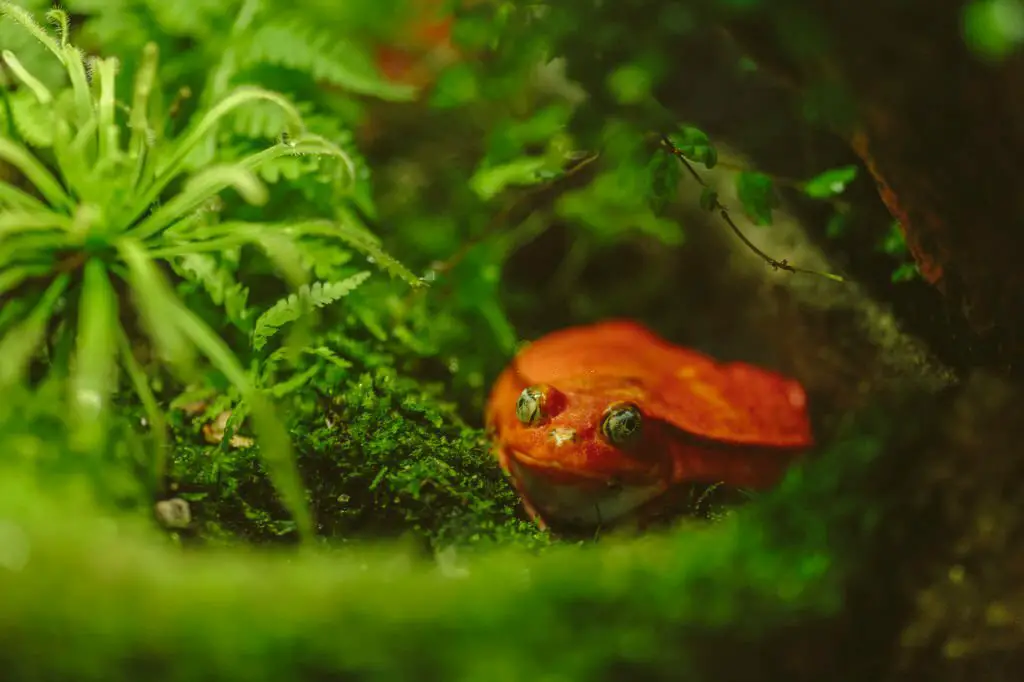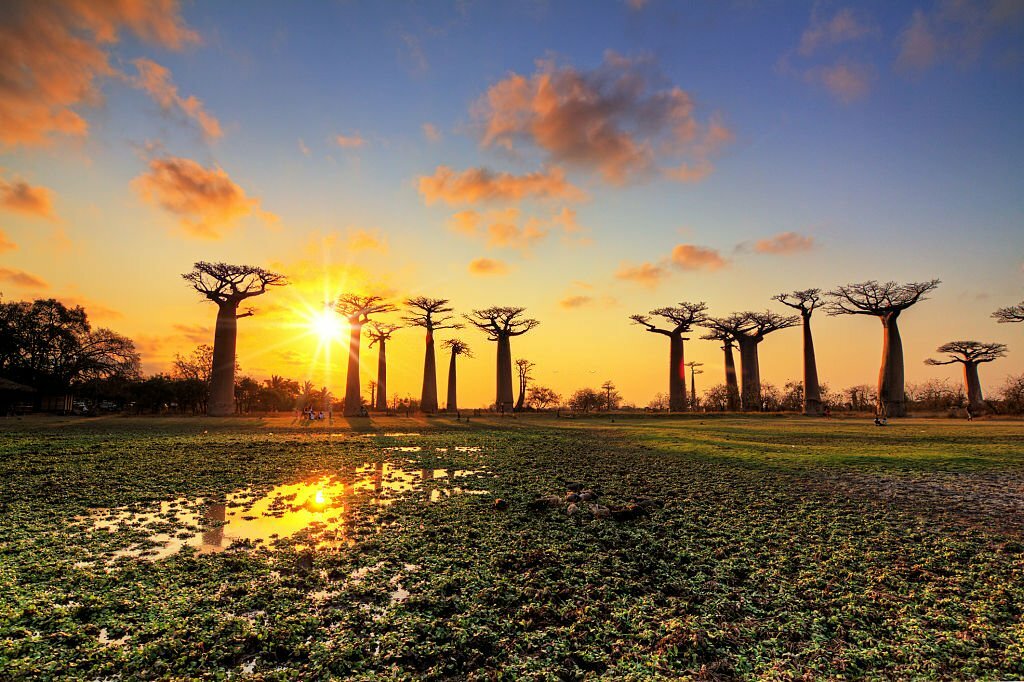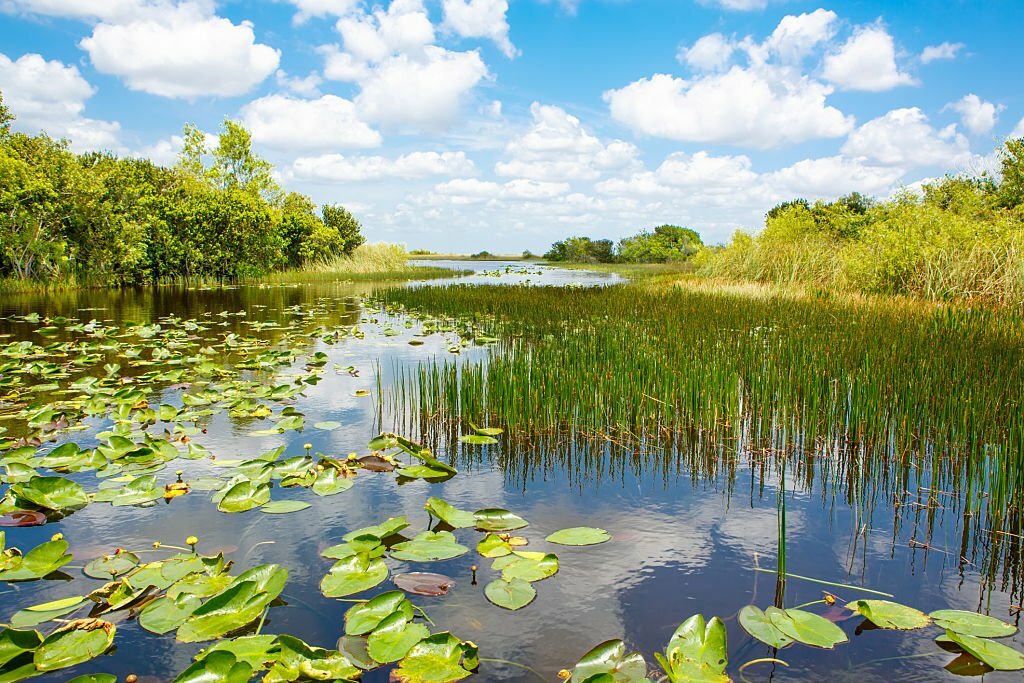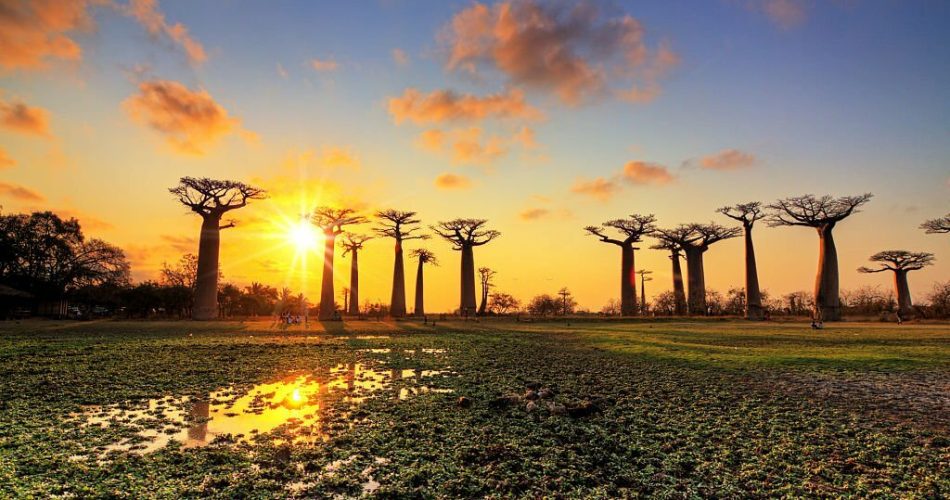Introduction to Madagascar’s Unique Environment
Madagascar, a stunning island located off the southeast coast of Africa, boasts a unique environment teeming with incredible biodiversity. This isolated landmass is home to a wide array of fascinating flora and fauna found nowhere else on the planet. One iconic inhabitant of this captivating island is the tomato frog, a species known for its vibrant red-orange coloration and distinctively round shape. Join us on a journey as we uncover the secrets of the tomato frog’s natural habitat and delve into the intricate web of Madagascar’s extraordinary environment.

Exploring Tomato Frogs’ Geographic Distribution
Tomato frogs (Dyscophus species) are native to the tropical island of Madagascar, located off the eastern coast of Africa. These vibrant and charismatic amphibians can be found in various regions of the island, each with its own unique environmental conditions. Let’s dive into the geographic distribution of tomato frogs in Madagascar and explore the fascinating range of habitats they inhabit.
Northern Region:
In the northern part of Madagascar, tomato frogs are primarily found in the dense rainforests of the Marojejy National Park and Montagne d’Ambre National Park. This region’s high rainfall and humidity levels create an ideal environment for tomato frogs to thrive. They can often be spotted in the lowland areas near rivers and wetlands.

Eastern Region:
Moving along the eastern coast, tomato frogs occupy the lowland rainforests and wetlands of areas like Masoala National Park and Mantadia National Park. These lush and biodiverse regions provide ample opportunities for tomato frogs to hide amongst the thick vegetation and breed in the surrounding freshwater habitats.
Central Region:
Tomato frogs can also be found in the central highlands of Madagascar, specifically in the Analamazaotra Special Reserve and Andasibe-Mantadia National Park. Despite the cooler temperatures at higher altitudes, these areas still possess the necessary moisture and suitable vegetation for tomato frogs’ survival.
Southern Region:
While tomato frogs are less abundant in the southern part of Madagascar, they can still be found in select areas such as Ranomafana National Park and Isalo National Park. The drier climate and sparser vegetation of this region present different challenges for tomato frogs, but they adapt to the available habitats, such as riverbanks and swamps.
It’s important to note that tomato frogs’ geographic distribution is influenced by their habitat preferences, which include the presence of freshwater sources, dense vegetation for protection, and suitable breeding sites. As we explore tomato frog habitats further, we’ll gain a deeper understanding of the specific environmental factors that contribute to their distribution across Madagascar.

Habitat Preferences of Tomato Frogs
Tomato frogs are endemic to the island of Madagascar in the Indian Ocean. They are found in various natural habitats across the island, each with its distinct characteristics. Understanding the habitat preferences of these fascinating amphibians is crucial for their conservation and survival.
Tomato frogs primarily inhabit the east coast of Madagascar, particularly the lush rainforests and wetlands of the region. These frogs are predominantly found in lowland areas, including the humid forests and swamps that are abundant in this part of the island.

Within the rainforests, tomato frogs seek out areas with dense vegetation and ample leaf litter, as they rely on the cover these provide for protection and breeding. They favor the forest floor and moist areas near streams and ponds. Preferred habitat conditions typically include high humidity, moderate temperatures, and access to freshwater sources.
Wetlands, such as marshes, ponds, and shallow lakes, also serve as important habitats for tomato frogs. These areas provide abundant plant life and water sources, both of which are essential for their survival. Wetlands offer breeding sites and foraging opportunities, attracting tomato frogs with their rich biodiversity.
Tomato frogs exhibit a preference for habitats with ample vegetation cover, including both natural forests and agricultural areas like rice paddies and banana plantations. These areas often offer suitable shelter and food sources, although human activities can disrupt their delicate ecological balance.
It should be noted that tomato frogs are not limited to a single type of habitat. They are highly adaptable and can be found in a variety of environments, including degraded forests and disturbed habitats. However, their populations tend to thrive in well-preserved rainforests and wetlands, emphasizing the importance of conserving these natural habitats.
Understanding the Role of Rainforests and Wetlands
Rainforests and wetlands play a crucial role in the habitat of tomato frogs. These ecosystems provide the necessary conditions for the survival and reproduction of these unique amphibians. In rainforests, tomato frogs find ample hiding places among the dense vegetation and leaf litter, which helps them evade predators and maintain their moisture levels. The humidity created by the rainforest’s ever-present moisture is particularly important for tomato frogs’ skin health and respiration.

Wetlands, on the other hand, offer tomato frogs a diverse range of habitats to occupy. From swamps and marshes to flooded grasslands and rice paddies, these water-rich environments provide excellent breeding grounds for the frogs. Tomato frogs lay their eggs in shallow, still water where they can develop into tadpoles before undergoing metamorphosis into fully formed frogs.
The dense canopy of rainforests shields tomato frogs from direct sunlight, preventing them from overheating while also reducing water evaporation from their bodies. Additionally, the abundance of vegetation in rainforests provides ample food sources, such as insects and other small invertebrates, which are essential for the tomato frog’s diet.
Wetlands serve as feeding grounds for tomato frogs as well. The variety of plant life and aquatic invertebrates in these habitats ensures a steady supply of food for the frogs. Furthermore, the interconnectedness of wetland ecosystems allows tomato frogs to migrate between different areas, ensuring genetic diversity and preventing overcrowding.

It is important to acknowledge the role of rainforests and wetlands in supporting the delicate balance of tomato frog populations. Destruction or degradation of these habitats due to deforestation, urbanization, and pollution can have severe consequences for the survival of tomato frogs. Conservation efforts should focus on preserving and restoring these vital ecosystems, ensuring the long-term viability of tomato frog populations in Madagascar.
Other Factors Influencing Tomato Frog Habitat
Tomato frogs, native to Madagascar, are fascinating amphibians that are highly influenced by various factors in their habitat. Apart from their geographic distribution and specific habitat preferences, there are other key factors that significantly influence the tomato frog’s habitat. These factors play a crucial role in their survival and overall well-being. Let’s take a closer look at these factors:
Temperature: Tomato frogs thrive in a tropical climate, where temperatures remain consistently warm and humid. Drastic fluctuations in temperature can be detrimental to their health and breeding patterns, making a stable and suitable temperature crucial for their habitat.
Moisture: Moisture levels are essential for tomato frog survival. Being amphibians, they require a moist environment to keep their skin hydrated and to support their reproductive activities. Wetlands and rainforests, with their high humidity and ample water sources, provide the ideal conditions for these frogs.
Vegetation Cover: Tomato frogs prefer habitats with dense vegetation cover, such as rainforests and swampy areas. The vegetation not only provides shelter and protection from predators but also offers ample opportunities for hunting prey. The presence of plants, such as reeds and shrubs, also promotes suitable breeding environments.
Water Quality: Tomato frogs are highly sensitive to changes in water quality. They require clean and unpolluted water sources for breeding and sustaining their populations. Pollutants and contaminants in their habitat can have adverse effects on their health and overall survival.
Predators: The presence of natural predators in the tomato frog’s habitat has a significant influence on their population dynamics. Predatory species, such as snakes, birds, and mammals, play a role in shaping the frog’s behavior and distribution. The availability of suitable hiding places, such as fallen logs or leaf litter, helps tomato frogs evade potential predators.
Human Impact: Human activities, such as deforestation, urbanization, and pollution, have a profound impact on tomato frog habitats. The destruction of rainforests and wetlands directly threatens the availability of suitable habitats for these frogs. Conservation efforts aim to raise awareness about these issues and promote sustainable practices to protect their natural homes.
Understanding the various factors influencing tomato frog habitat highlights the importance of preserving their natural environments. By conserving and protecting these habitats, we can ensure the long-term survival of tomato frogs and sustain the unique biodiversity of Madagascar’s ecosystems.
Conservation Efforts and Threats to Tomato Frog Habitats
Tomato frogs, native to Madagascar, are facing several threats to their habitats. Conservation efforts are crucial to preserving the natural homes of these unique amphibians. In this section, we will explore the challenges faced by tomato frog habitats and the ongoing initiatives to protect them.
One major threat to tomato frog habitats is deforestation. The rapid clearing of forests for agriculture, logging, and human settlements significantly reduces the available habitat for these frogs. As a result, the loss of suitable vegetation limits their chances of survival and reproduction.

Additionally, pollution poses a significant risk to tomato frog habitats. Pollution from agricultural run-off, mining activities, and improper waste management can contaminate water sources and disrupt the delicate balance required for the frogs’ survival. The accumulation of toxins in their habitats can lead to decreased reproductive success and overall population decline.
Climate change also poses a significant threat to tomato frog habitats. Rising temperatures and shifts in rainfall patterns can alter the delicate ecosystem balance that these frogs depend on. Changes in temperature and precipitation can directly affect their breeding cycles, as well as impact the availability of food sources.
Despite the challenges, conservation efforts are in place to protect tomato frog habitats. Madagascar’s government, along with international organizations and local communities, is working together to establish protected areas and promote sustainable land-use practices. These initiatives aim to preserve the remaining forests and wetlands that serve as vital habitats for tomato frogs and other endemic species.
Education and outreach programs are also crucial components of conservation efforts. Raising awareness about the importance of tomato frog habitats and the need for their protection can help garner support and encourage sustainable practices among local communities and tourists.
In conclusion, the conservation of tomato frog habitats is essential to ensure the survival of these remarkable amphibians. Efforts to combat deforestation, pollution, and the impacts of climate change are vital for preserving the natural homes of tomato frogs. By recognizing the threats and implementing conservation measures, we can contribute to the long-term survival and well-being of these unique creatures and their ecosystems.

Conclusion: Preserving the Natural Homes of Tomato Frogs
Conservation initiatives, led by Madagascar’s government, international organizations, and local communities, are focused on establishing protected areas and promoting sustainable land-use practices. These efforts aim to safeguard the remaining forests and wetlands that serve as vital habitats for tomato frogs and other endemic species.
It is through concerted efforts and collective action that we can ensure the long-term survival and well-being of tomato frogs and their ecosystems. By preserving their natural homes, we are not only protecting these remarkable amphibians but also contributing to the conservation of Madagascar’s unique biodiversity.
Join us in our commitment to preserving the natural habitats of tomato frogs and making a positive impact on their future. Through sustainable practices, responsible tourism, and supporting conservation organizations, we can all play a part in safeguarding the fragile ecosystems that these fascinating creatures call home. Together, let’s ensure a thriving future for tomato frogs in Madagascar.


